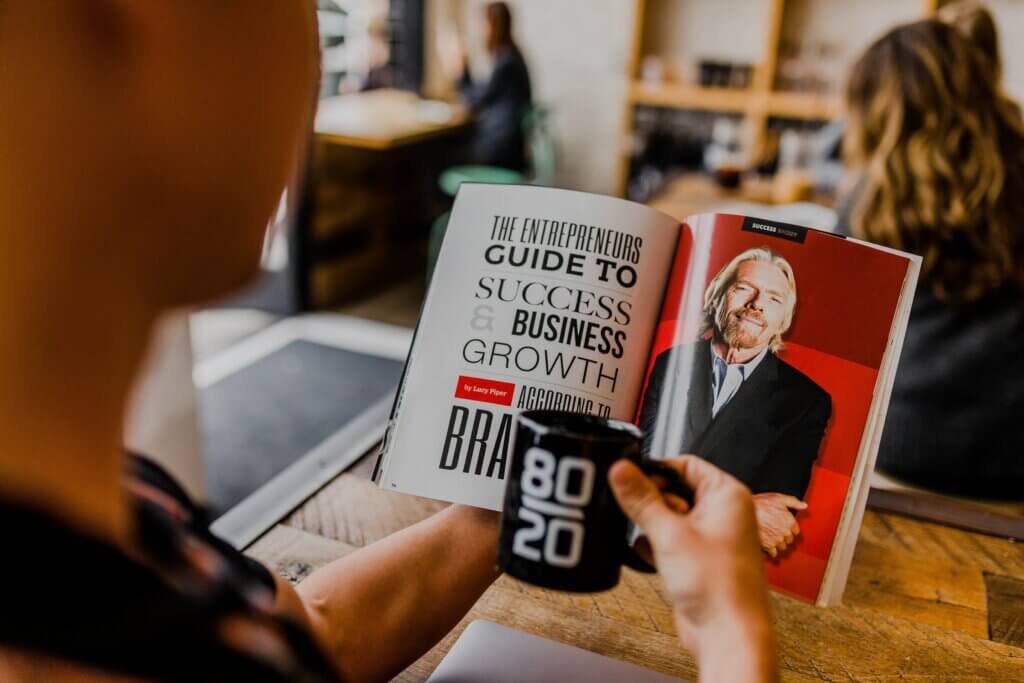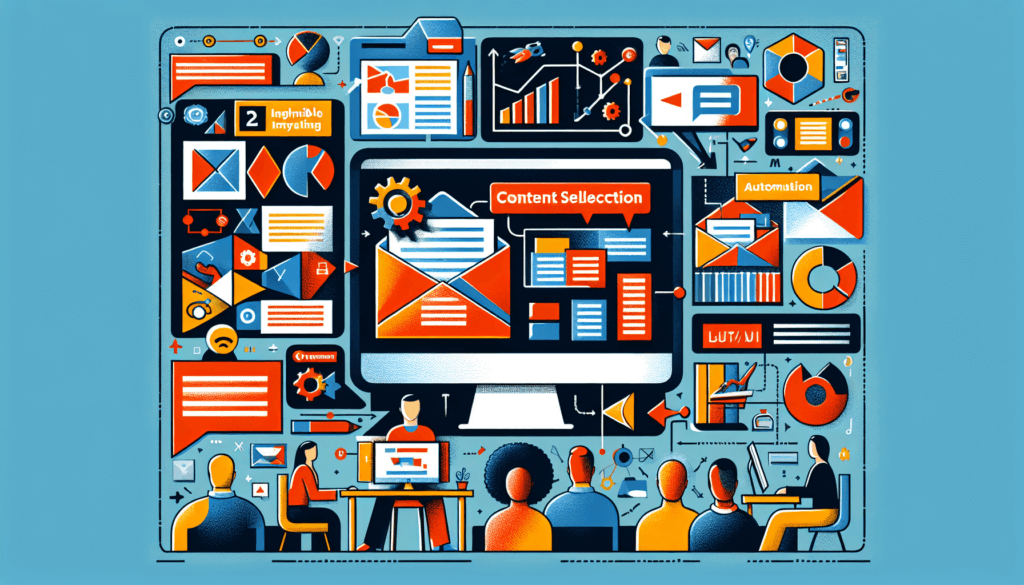If you’re running a blog and want to find a way to attract and engage with your audience on a regular basis, creating an effective email newsletter is the way to go. An email newsletter serves as a powerful tool to not only promote your blog but also build a loyal community around it. By delivering valuable content directly to your subscribers’ inboxes, you can establish a stronger connection, drive more traffic to your blog, and ultimately increase your blog’s success. In this article, we will explore the key steps to help you create an email newsletter that captures your readers’ attention and keeps them coming back for more.

Understanding the Purpose of an Email Newsletter
An email newsletter is a powerful tool for connecting with your audience on a more personal level. It allows you to establish a stronger relationship with your readers by delivering valuable and relevant content directly to their inboxes. This personalized approach creates a sense of exclusivity and makes your subscribers feel special, thus building their trust and loyalty towards your blog.
In addition to building a connection, email newsletters also serve the purpose of increasing traffic and engagement on your blog. By including links to your latest blog posts or other valuable resources, you can drive more readers to your website. This not only boosts your blog’s visibility but also helps in nurturing a community of engaged readers who are more likely to interact with your content and share it with others.
Another crucial aspect of an email newsletter is its role in promoting your blog content. By featuring your recent blog posts, updates, or even exclusive content, you can generate more interest in your blog and encourage readers to visit your website regularly. This promotion not only helps in increasing your website traffic but also enhances your blog’s visibility and ultimately leads to a higher conversion rate.
Choosing the Right Email Marketing Service
When it comes to choosing the right email marketing service for your blog, there are several factors to consider. First and foremost, you need to evaluate your budget and needs. Determine how much you are willing to invest in an email marketing platform and what features are essential for your blog’s success.
Next, explore different email marketing platforms available in the market. Look for platforms that offer user-friendly interfaces, robust automation capabilities, and attractive email templates. Consider platforms that provide excellent customer support and integrate well with other tools you use for your blog.
Once you have shortlisted a few options, compare their features and functionality. Look for features like drag-and-drop editors, segmenting capabilities, A/B testing, and analytics. Pay attention to the ease of use, deliverability rates, and scalability of each platform.
By considering your budget, exploring different platforms, and comparing their features, you can find the right email marketing service that aligns with your blog’s goals and needs.

Crafting Compelling Subject Lines
The subject line of your email newsletter is the first thing your readers see in their inbox, so it needs to grab their attention and entice them to open your email. To create a compelling subject line, you can use tactics like personalization, urgency, curiosity, or humor.
First, try personalizing the subject lines by including the recipient’s name or other relevant information. This creates a sense of familiarity and makes the email feel more personal.
Second, keep your subject lines concise and clear. Long subject lines often get truncated in email clients, so aim for around 40-50 characters to ensure maximum impact. Use action-oriented words and power verbs to encourage readers to take action.
Lastly, experiment with different subject line strategies to see what resonates best with your audience. Try using questions, teasing content, or even emojis to make your subject lines stand out. Monitor the open rates and engagement metrics to understand what works best for your email newsletters.
Designing an Eye-Catching Email Template
The design of your email newsletter plays a crucial role in capturing the attention of your readers. When designing your template, it’s important to keep it simple, visually appealing, and aligned with your blog’s branding.
Keep the layout clean and uncluttered, using ample white space and clear sections for different content. This allows your readers to easily navigate through the email and find the information they are interested in.
Incorporate your blog’s branding elements, such as your logo, color scheme, and typography, into the design of your email template. Consistency in branding helps in reinforcing your blog’s identity and making your email newsletters instantly recognizable to your subscribers.
Since a significant number of people access their emails on mobile devices, it’s crucial to optimize your email template for mobile responsiveness. Test your template on various devices and email clients to ensure that it displays correctly and is easy to read and navigate on smaller screens.
By crafting an eye-catching and well-designed email template, you can leave a lasting impression on your readers and enhance the overall email experience.

Creating Engaging Newsletter Content
The content of your email newsletter is what keeps your subscribers interested and coming back for more. When creating your newsletter content, it’s important to strike a balance between promotional and informative content.
While promoting your blog posts or products is essential, also provide valuable and educational content that your readers can benefit from. This can include tips, tutorials, industry insights, or even exclusive content that is not available on your blog.
Writing compelling headlines and intros is crucial for capturing your readers’ attention. Use attention-grabbing phrases, intriguing questions, or surprising statistics to entice your readers to continue reading. Keep your intros concise yet engaging, setting the tone for the rest of the content.
Visuals and multimedia elements like images, videos, or infographics can make your newsletter content more visually appealing and interactive. Visuals help break up text-heavy newsletters and make the content easier to consume. Remember to optimize the file sizes of the images and videos for faster loading times.
By creating engaging and valuable content for your email newsletters, you can keep your subscribers interested, increase their engagement, and establish your blog as a go-to resource in your niche.
Segmenting Your Email List
Segmenting your email list is a powerful strategy that allows you to tailor your content and offers to specific groups of subscribers. By understanding the importance of segmentation, you can deliver more relevant and personalized content to your subscribers, increasing their engagement and loyalty.
Start by identifying target groups based on demographics, such as age, location, gender, or purchasing behavior. This enables you to create content that resonates with each segment’s specific interests and needs. For example, if you have a fashion blog, you can segment your audience based on their gender and send targeted emails featuring the latest trends for men and women separately.
Customize the content for each segment by using dynamic content blocks within your email template. This allows you to show different content to different segments based on their preferences. For instance, you can show product recommendations based on past purchases or articles related to their previous engagement.
Regularly review and update your segments to ensure they remain relevant and aligned with your subscribers’ changing preferences and interests. This helps in maintaining a high level of engagement and ensuring that your subscribers receive content that is tailored to their needs.
By segmenting your email list and personalizing your content, you can deliver a more targeted and impactful email newsletter, fostering stronger connections with your subscribers.

Setting Up Automated Campaigns
Automated campaigns are a time-saving and efficient way to engage with your subscribers without manually sending individual emails. They allow you to automate various email sequences to nurture your subscribers and provide them with valuable content at the right times.
One essential automated campaign is the welcome email series sent to new subscribers. This series introduces your blog, provides an overview of the content you offer, and sets expectations for future emails. Welcome emails are a great opportunity to make a positive first impression and establish a strong connection with your new subscribers.
Automating blog post notifications is another valuable campaign. Whenever you publish a new blog post, an automated email can be sent to your subscribers, keeping them updated and encouraging them to visit your blog. This ensures that your subscribers never miss out on your latest content, increasing their engagement and traffic on your blog.
Drip campaigns for onboarding new subscribers can also be automated. These campaigns consist of a series of emails that guide new subscribers through different stages of their journey, providing valuable information, resources, and offers along the way. Such campaigns help in building a rapport with new subscribers and nurturing them into loyal readers.
By setting up automated campaigns, you can save time, ensure consistent communication, and provide valuable content to your subscribers at the right moments.
Optimizing for Deliverability
To ensure that your email newsletters reach your subscribers’ inboxes, it’s crucial to optimize for deliverability. Building a healthy subscriber list, avoiding spam filters, and monitoring email metrics are key factors in maximizing deliverability rates.
Building a healthy subscriber list means acquiring subscribers who genuinely want to receive your emails. Avoid purchasing email lists or using questionable tactics to grow your list. Instead, focus on organic methods like opt-in forms on your blog, social media promotions, or gated content offers. This ensures that your subscribers are genuinely interested in your content, reducing the chances of your emails being marked as spam.
Avoiding spam filters requires adhering to email best practices and anti-spam laws. Use a reputable email marketing service that follows industry standards and provides strong deliverability rates. Furthermore, avoid using spam trigger words, excessive capitalization, misleading subject lines, or excessive use of exclamation marks in your emails. These practices can trigger spam filters and prevent your emails from reaching your subscribers’ inboxes.
Monitoring email metrics and engagement is crucial for optimizing deliverability. Keep an eye on metrics like open rates, click-through rates, bounce rates, and spam complaints. Analyze the data to identify any issues with your email campaigns, content, or list quality. By continuously monitoring and improving these metrics, you can ensure that your email newsletters are reaching the right audience.
By optimizing for deliverability, you can maximize the reach and impact of your email newsletters, ensuring that they land in your subscribers’ inboxes and are not lost in the abyss of spam folders.

Analyzing and Improving Performance
Regularly analyzing the performance of your email newsletters is vital for understanding what works and what can be improved. Tracking open rates and click-through rates provides valuable insights into the effectiveness of your subject lines, content, and calls to action.
Open rates indicate how many subscribers actually opened your email. If your open rates are low, it might be a sign that your subject lines are not compelling enough or your emails are not reaching the right audience. Experiment with different subject line strategies, personalization techniques, or segmentation to improve your open rates.
Click-through rates measure the number of subscribers who clicked on the links within your email. Low click-through rates can indicate that your content is not engaging enough or your calls to action are not clear. Analyze your content, headlines, and placement of links to identify areas for improvement. Also, ensure that your emails are optimized for different devices and that the links are easily clickable.
Identifying high-performing content allows you to replicate its success in future newsletters. Keep an eye on the content that receives high engagement, such as shares, comments, or conversions. What made that content stand out? Was it the topic, writing style, or visuals? By understanding what resonates with your audience, you can create more of such content and increase the overall performance of your email newsletters.
Experimenting with different strategies is crucial for continuous improvement. Test different subject line variations, email layouts, content formats, or calls to action to understand what works best for your audience. A/B testing allows you to compare the performance of different elements and make data-driven decisions about your email newsletter strategy.
By analyzing and improving the performance of your email newsletters, you can optimize your content, increase engagement, and ultimately achieve better results with each subsequent send.
Ensuring Compliance with Email Regulations
Complying with email regulations is not only a legal requirement but also an ethical practice that respects your subscribers’ rights and privacy. Understanding and following anti-spam laws is crucial to maintaining a positive reputation and fostering trust with your subscribers.
Anti-spam laws vary by country, but most have common requirements. Familiarize yourself with the laws applicable in your jurisdiction and ensure that you are following them. These laws typically require obtaining proper consent from subscribers, providing an unsubscribe option in every email, and including your contact information.
Obtaining proper consent means ensuring that your subscribers have willingly opted in to receive your emails. Implement double opt-in processes, where subscribers confirm their subscription through a verification email, to ensure proper consent is obtained. Avoid adding subscribers to your list without their explicit permission or using pre-checked consent boxes.
Including unsubscribe links and contact information in every email is essential for compliance and transparency. Make it easy for your subscribers to opt-out of receiving your emails if they wish to. Ensure that the unsubscribe process is straightforward and hassle-free. Additionally, include your contact information in each email to offer a way for subscribers to reach out to you if needed.
By ensuring compliance with email regulations, you protect your blog’s reputation, demonstrate good email marketing practices, and foster a positive relationship with your subscribers.
In conclusion, creating an effective email newsletter for your blog requires understanding the purpose of an email newsletter, choosing the right email marketing service, crafting compelling subject lines, designing an eye-catching template, creating engaging content, segmenting your email list, setting up automated campaigns, optimizing for deliverability, analyzing and improving performance, and ensuring compliance with email regulations. By following these guidelines and continuously improving your email marketing strategy, you can leverage the power of email newsletters to connect with your audience, increase engagement, and drive traffic to your blog.


